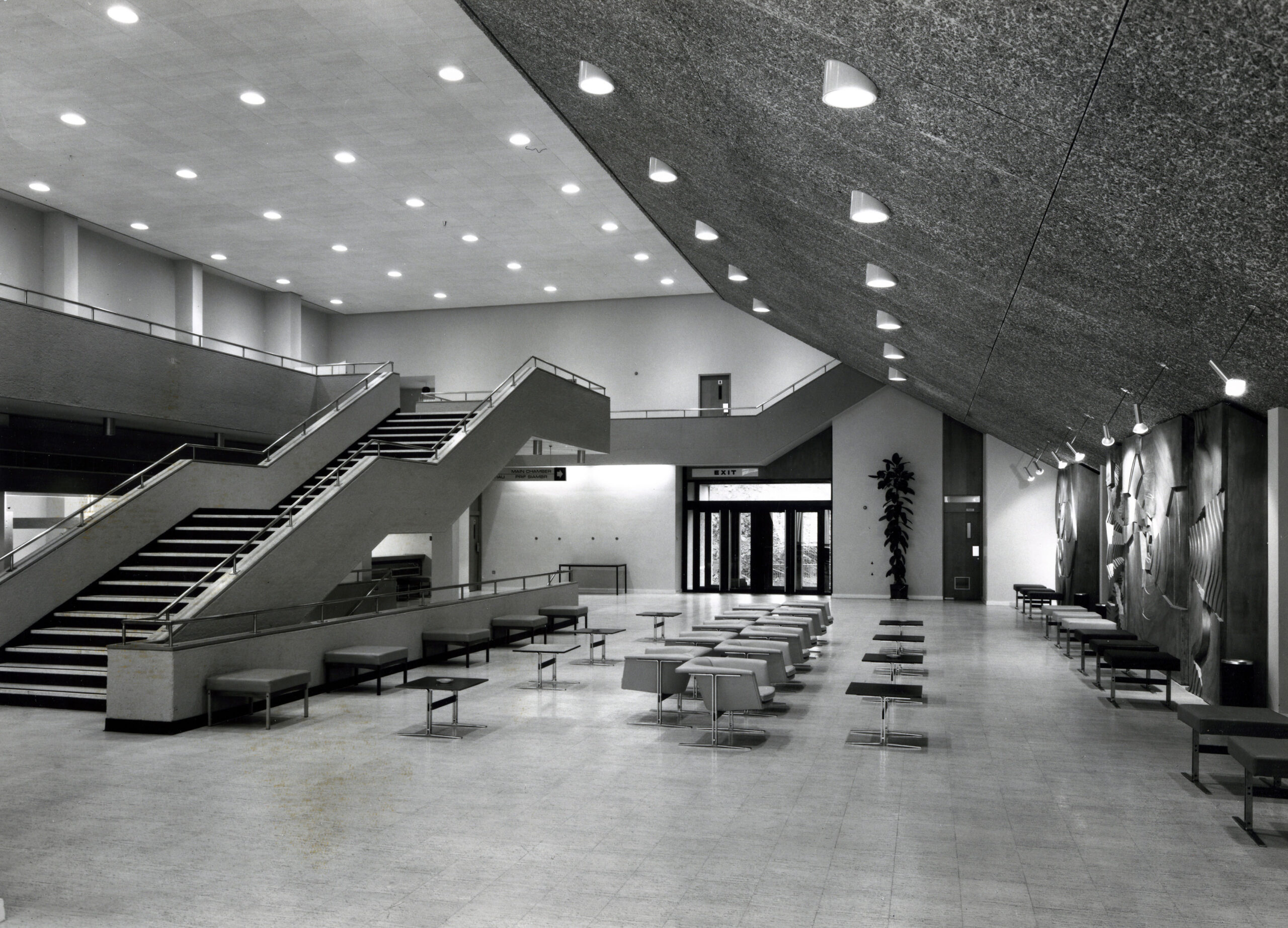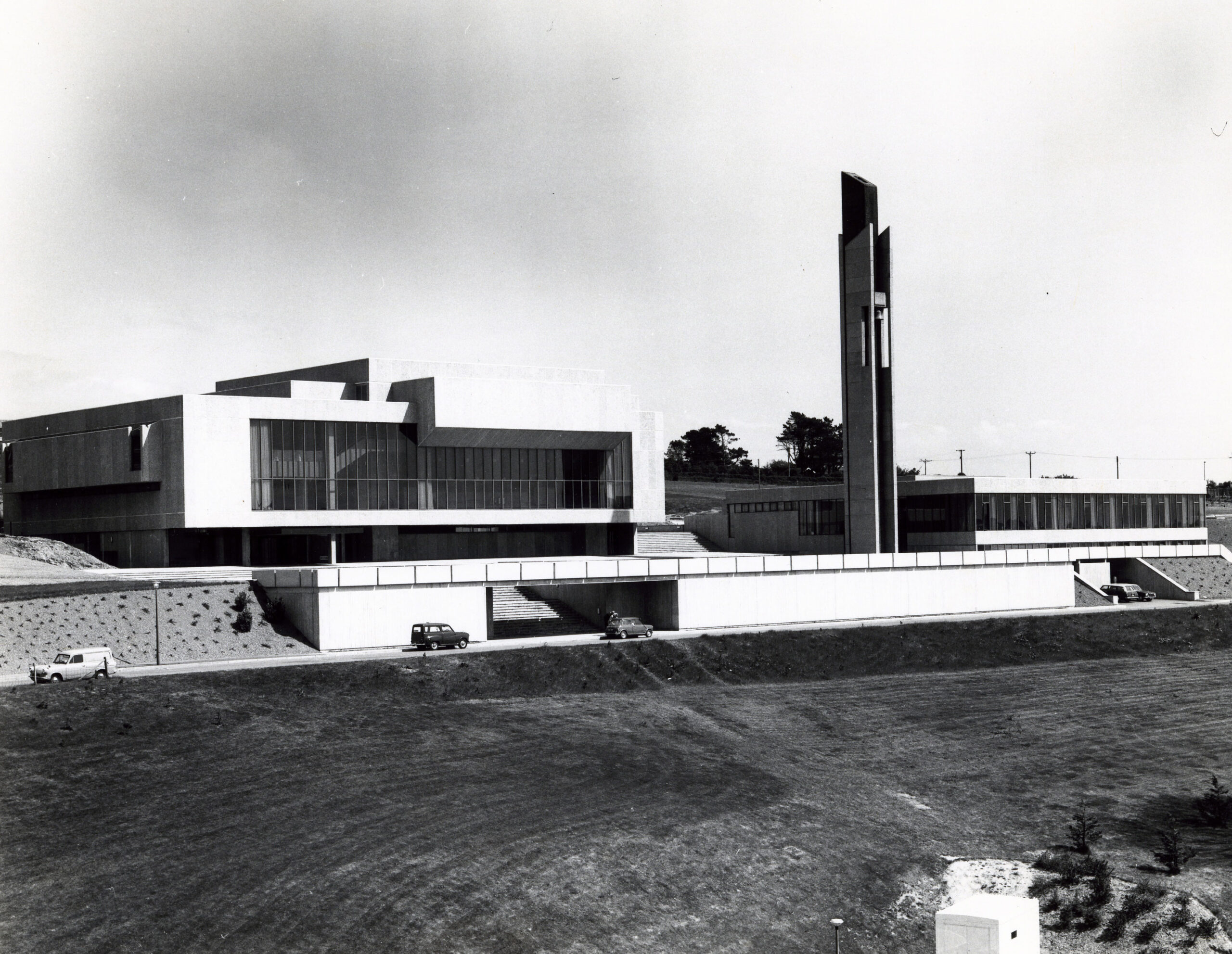50 years in the making
Aberystwyth Arts Centre was founded in the 1970s by the University College of Wales, Aberystwyth with the ambition to serve not just the College, but also the town and the surrounding counties.








A bridge between town and gown
The Great Hall was opened in 1970. Designed by architect Dale Owen of Percy Thomas Partnership, it was awarded the RIBA Gold Medal for Architecture in Wales. In Autumn 1972 ‘Theatr y Werin’, literally ‘theatre of the people’ was opened. This marked the completion of the project – and Aberystwyth Arts Centre was born.
From the very beginning the Centre pursued a diverse mixed programming policy, encouraging and supporting local groups and University ensembles and inviting leading professional companies to Aberystwyth. This work was made possible through the on-going support of the University as well as support from the Welsh Arts Council and the West Wales Association for the Arts.
Before they were famous
In the early years, under Roger’s direction, the Centre’s adventurous programming included productions featuring the likes of Peter Postlethwaite and Julie Walters – now well-known names from film and television – and companies such as Welfare State.
Ex RAF Wing Commander and Centre administrator, Ken Williams took over as Manager in 1975. With a love of music, he nurtured the venue’s concert programme to include classical music and musicals – still a summer highlight. In 1985, the Centre’s production of Godspell featured the professional debut of a young Michael Ball, now one of the UK’s favourite musical stars.
A significant shift
In 1978, the Centre started to expand into visual arts and exhibitions with the appointment of Alan Hewson as Exhibitions Officer. He also established the Arts Centre Café (1980), Bookshop (1981), and film programme. 1984 saw the first community arts and education programmes which has become a hallmark of the Centre’s activity.
Hewson was appointed Director in 1985, the same year the Welsh Arts Council withdrew funding from many of the theatres and arts centres in Wales to focus on work by producing theatre companies. Whilst still in receipt of core support from the University, it meant a significant shift for the Centre.
In response, three strategies were developed to innovate the artistic programme, self-finance a growing community arts programme and expand the Centre’s own earned income through the development of its commercial operations.
There’s nothing like a festival
Festivals were seen as a strategic way to develop the Centre’s artistic programme and attract new audiences. In 1986, Musicfest International Music Festival and Summer School was first established and has since grown into a major event in the UK classical music calendar. This was soon followed by the International Ceramics Festival in 1987 – thanks to the University’s own outstanding collection of twentieth century pottery. Now one the world’s foremost ceramic festivals, it attracts over 1,000 potters and ceramicists to Aberystwyth from around the world.
Over the next twenty years, the Arts Centre established and supported twelve more festivals over a wide range of art forms. Many developed with organisations and individuals who are still key partners to this day.
Realising its full potential
Developing the Centre’s commercial operations was initially inhibited by the lack of capital investment. However, a successful European funding application in 1993 and completion of a £4.3 million redevelopment in April 2000, supported by Arts Council of Wales and Aberystwyth University, saw the Centre fully realise its potential.
In 2009, an award-winning complex of 18 creative studios designed by Thomas Heatherwick was built to offer spaces for artists, craftworkers and creative arts businesses.
50 years on
The Arts Centre was built with the ambition of serving not only the College but also the town and surrounding area, acting as a bridge between “town and gown”. Thanks to this initial vision, today, 50 years later, we have become a thriving cultural hub, providing the communities of Mid Wales with access to the very best arts experiences, right on their doorstep.






